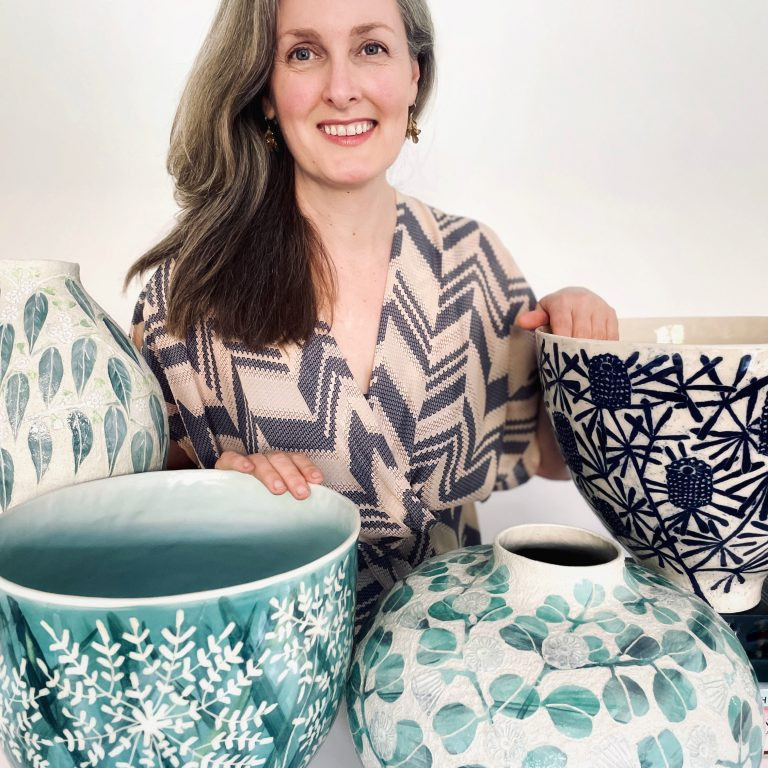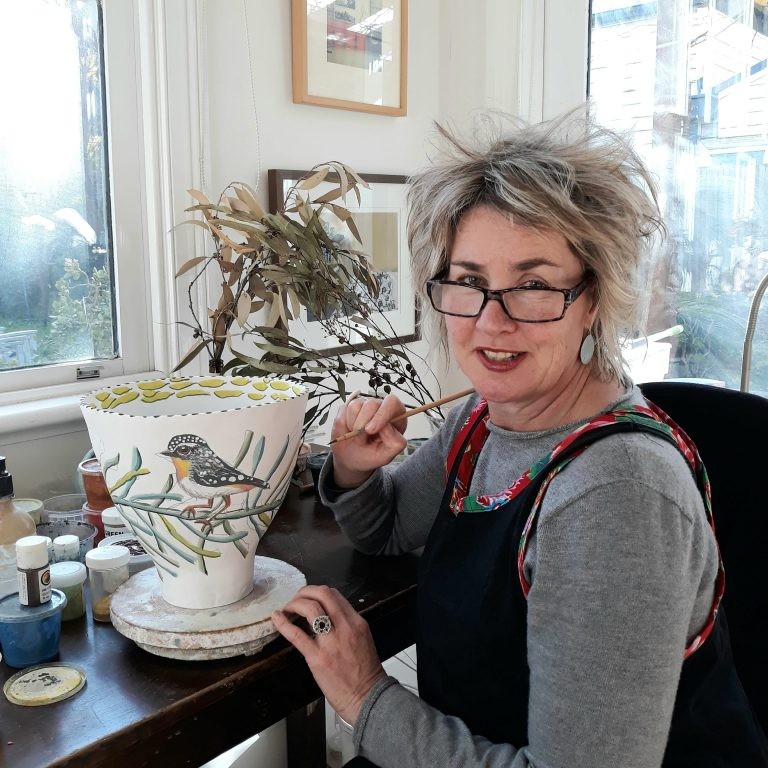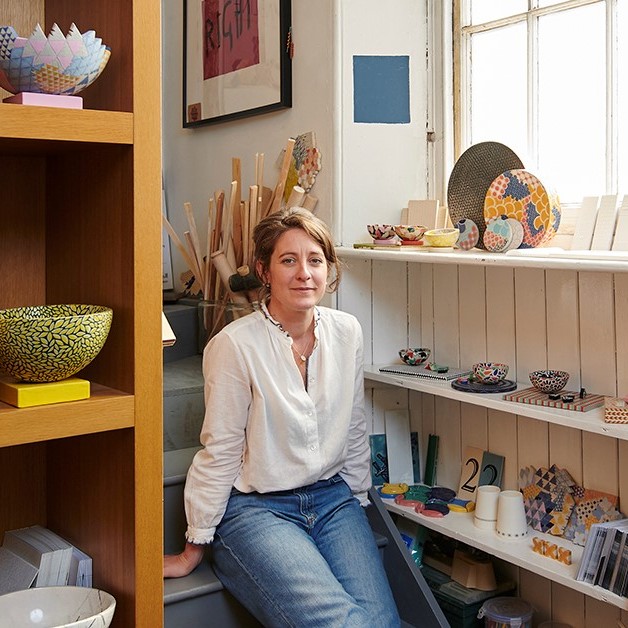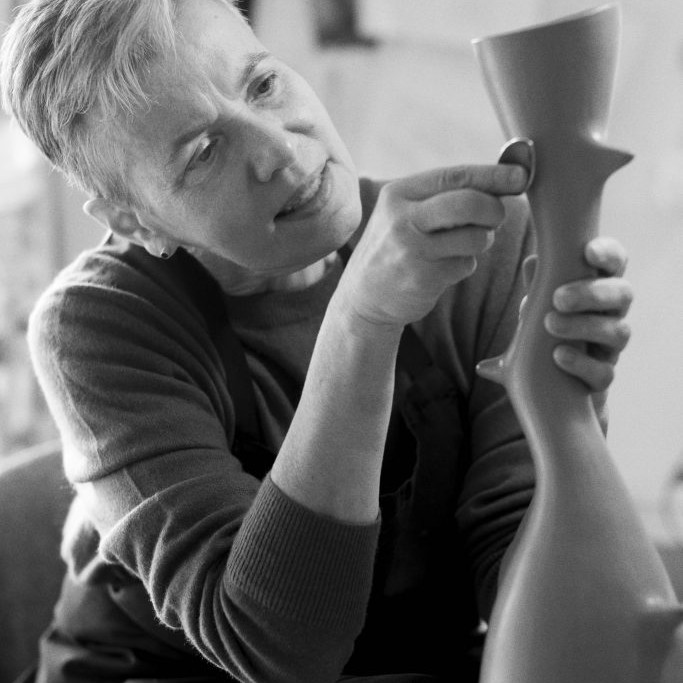Neville French Ceramic Artist - Victoria, Australia
Sumptuous-lavish, luxurious, opulent, magnificent, resplendent, lush, lavishly… These words only begin to introduce you to Neville French’s ceramics.
Zoneone Arts brings Neville French to you…
Since you have left your position as a University Lecturer, how has this extra time for art changed the input you can give to your own work?
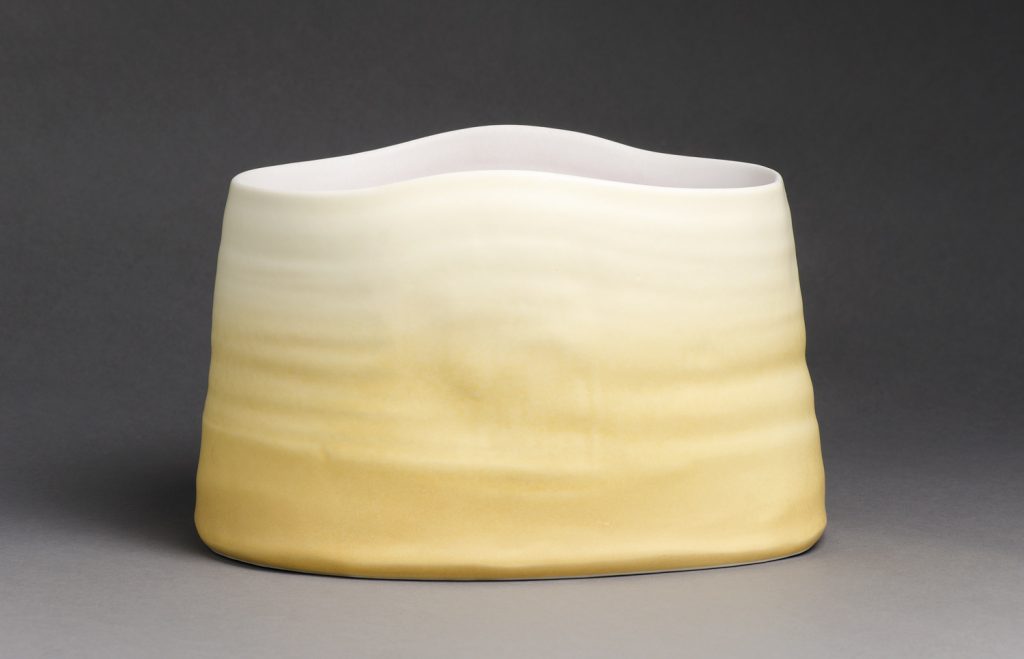
Mungo Light 11 2014, 24x 31 x27 cm. Wheel thrown and altered porcelain fired 1320c
Photo credit: Terence Bogue,
It has enabled me to spend more time in the studio and to work on some exciting projects. I developed a new series of large porcelain vessels for the Alcoso Vitrify National Ceramics Award in 2012 that were inspired by the vast landscape and light at Lake Mungo in southern NSW.
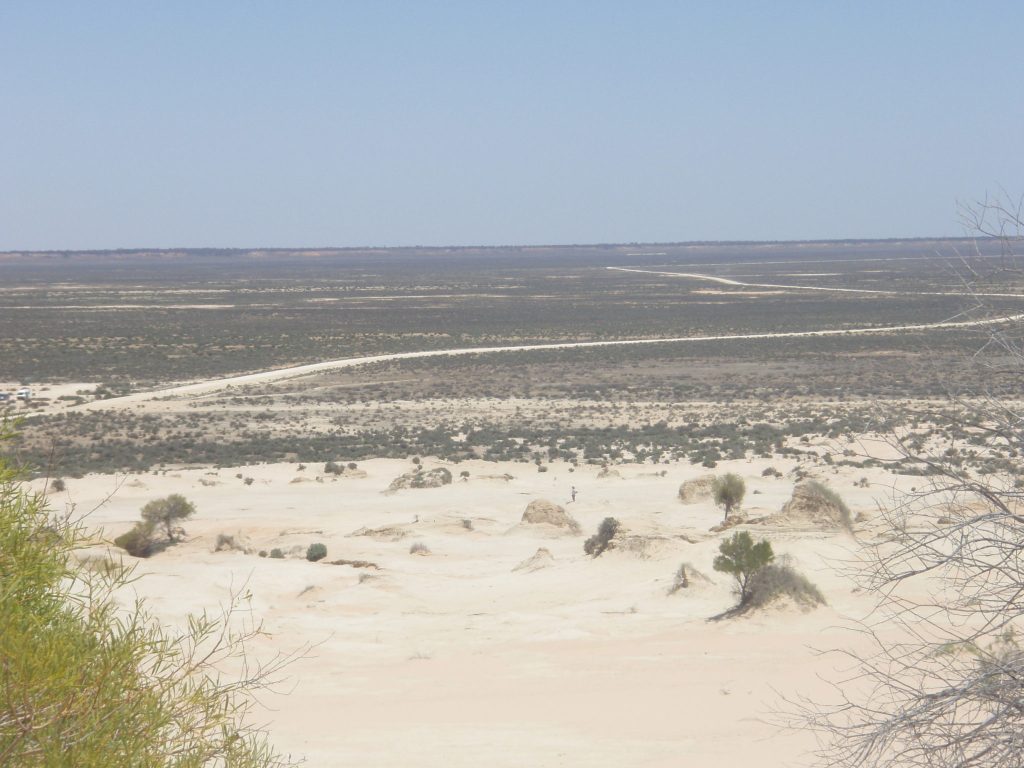
Lake Mungo Basin, Photo Credit Neville French
This significant environment was also the inspiration for the large wheel throw and altered vessels I created for the Cecily and Colin Rigg Contemporary Design Award at the National Gallery of Victoria in 2012. I have worked with artist Belinda Fox on major collaborative exhibitions: ‘Give & Take’ at Beaver Galleries in Canberra 2012, ‘Hua Ping’ at The Cat Street Gallery in Hong Kong 2013 and ‘Tilt’ at the Manly Art Gallery and Museum 2017.
I have also had more time to further develop my interest in functional tableware and experiment with the use of coloured glazes incorporating local granite, feldspar and wood ash and to fire my bourry- box wood burning kiln.
Do you miss the interaction with the students?
It is a pleasure to work with highly motivated students and I enjoy the shared learning and inspiration that happens in a great learning environment. I enjoyed the discussion of different ideas, the research investigations and achievements of students. I am pleased to be able to focus my attention more fully on my own work though and have found an ideal balance with teaching one day a week at a private art school in Melbourne (SOCA). This has been a wonderful experience and provides a perfect balance. There is a strong emphasis on the investigation of materials and shared discovery as a foundation for the development of ideas, techniques and individual work at SOCA and I have been assisting students to develop their knowledge and understanding of stoneware glazes and forming techniques as a basis for innovative tableware and sculptural vessels.
You often exhibit with other artists and more recently with Belinda Fox. Discuss the process you need to have to collaborate at this level.

Belinda Fox and Neville French at Buninyong Studio, 2016, Photo credit: Pia Johnstone
I have collaborated on two person shows such as ‘From the Landscape’, with Cathy Franzi, where our different work and landscape references complement each other and expand the theme. This collaboration involves a juxtaposition of our individual works.
When I work with Belinda Fox we collaborate on the ideas and work together on the creation of the ceramic pieces.
We have completed four major projects since 2010. I enjoy the challenge of working together and the potential of our combined expertise. It requires courage to collaborate in this way as we take risks with each other’s work and respond intuitively to the development of forms and surfaces.
We accept the possibility of failure and we are candid with each other when evaluating results and we remain open to new ways of thinking about the work. When we work together we explore a shared vision and integrate our skills to create new work. We began our most recent project, ‘Tilt’ at the Manly Art Gallery & Museum in 2017, with discussions about humanity and the plight of refugees that are forced into dangerous situations through circumstances and the lengths people will go to be safe.
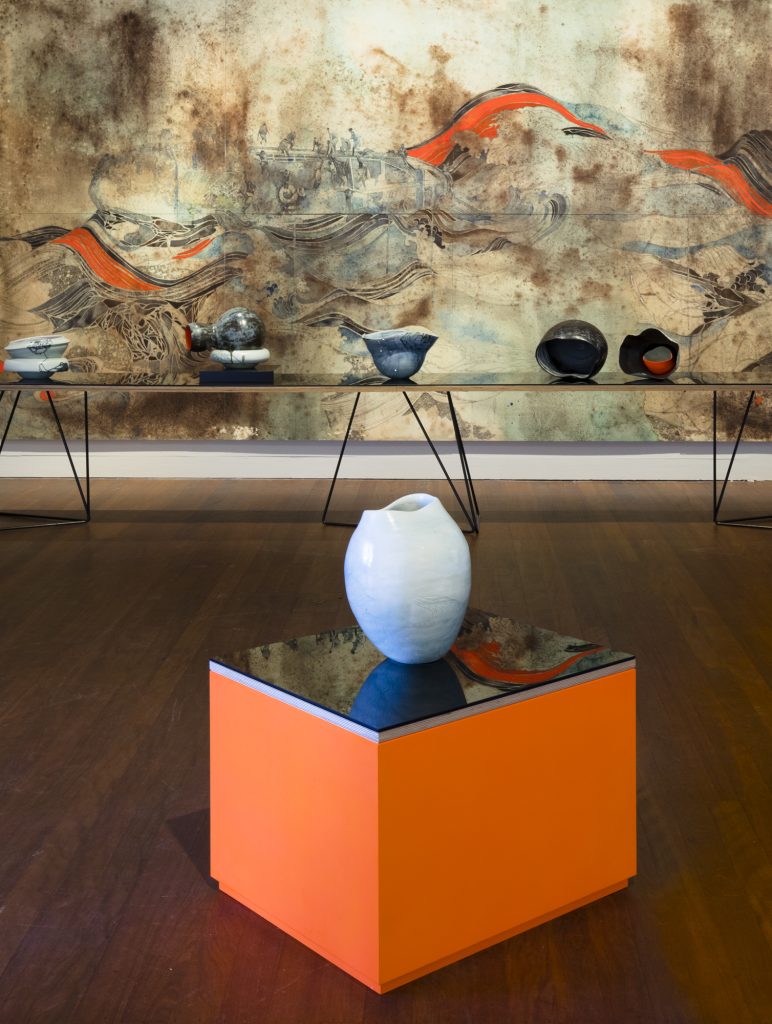
Tilt 12, 2017, 30x32x20cm, Collection Manly Art Gallery, Photo credit: Silversalt photography
The exhibition installation was designed to evoke a sense of unease in the viewer and draw attention to the dilemma of displaced people. It’s a joy to share the development of ideas and work with someone who is masterful in their art. Belinda has exceptional skill in drawing and a willingness to experiment and push the boundaries. There is sensitivity in her work and material beauty and when she works on my pots she adds a dynamic play of lines and spaces that’s very engaging.
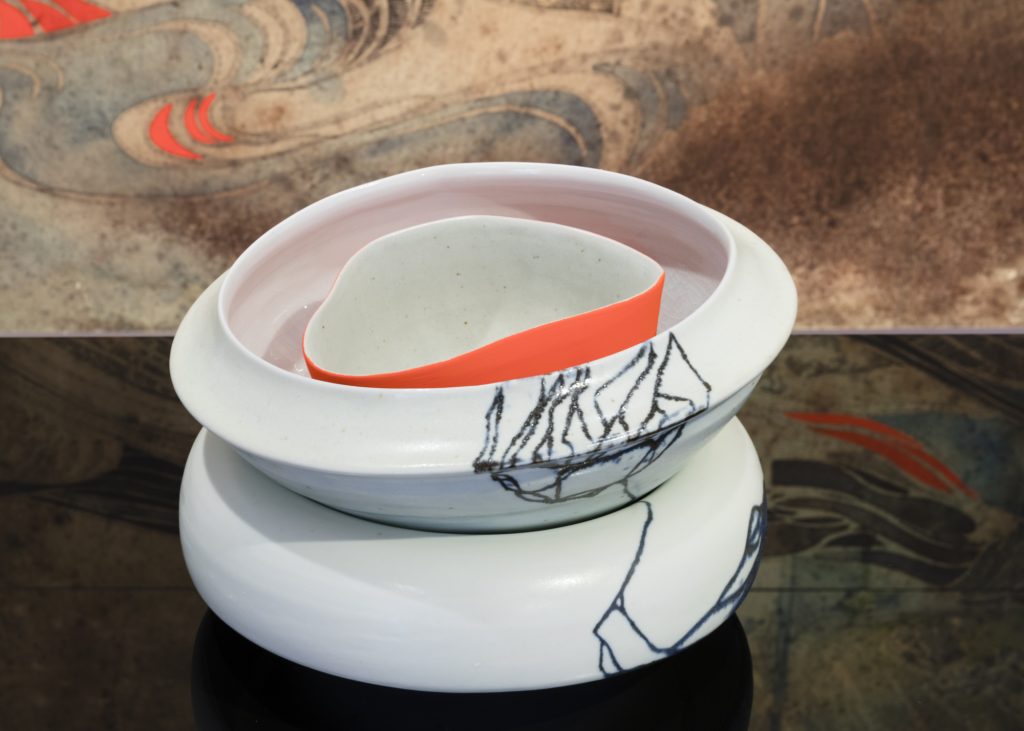
Tilt installation 2017, Manly Art Gallery and Museum, Photo credit: Silversalt photography
Expand on the relationship of a collaboration of painting and ceramics. Were many of your pieces bought together with Belinda’s work?
The ceramics that we create together have a strong affinity with Belinda’s drawings. The pieces are often grouped in relation to paintings or prints to add a sensory and tactile 3d element to enhance the expressive intent of the work and the overall theme of the show.
The ceramic pieces are fully resolved and often sold individually but we are always pleased when works are acquired together as they retain that unique connection.
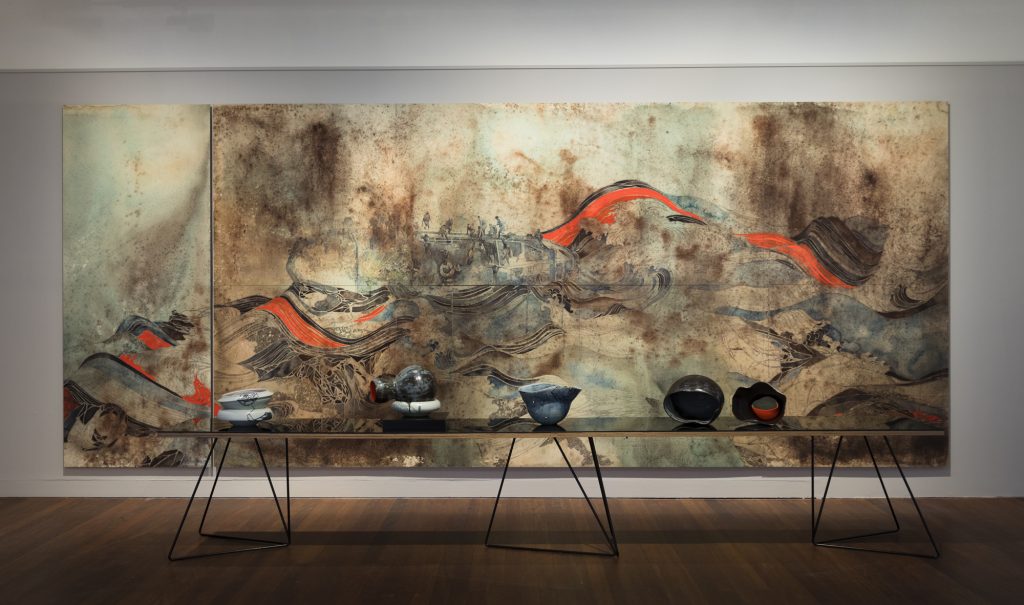 Tilt 9, 2017, Slips with woodash and limestone glazes, Photo credit: Silversalt photography
Tilt 9, 2017, Slips with woodash and limestone glazes, Photo credit: Silversalt photography
You have your work in many Australian Galleries – expand on one piece that really gave you a buzz and why.
One work that I am particularly pleased with is ‘Mungo Light 6’ 2012.
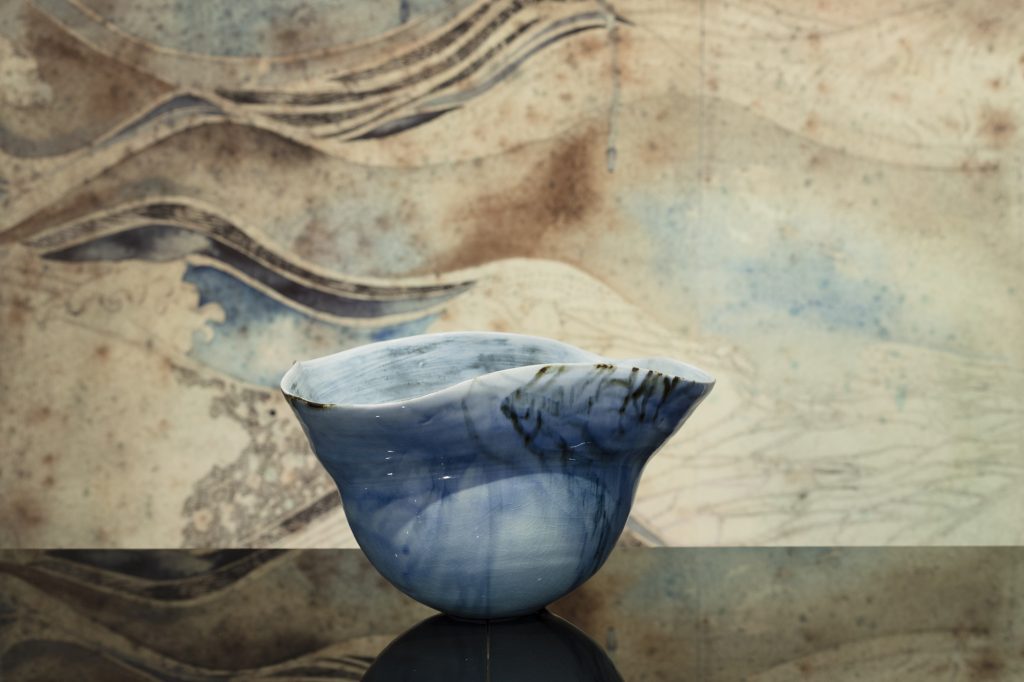
NGV, Mungo Light 6, 2011-2012, Copyright photo credit: NGV
This pair of large wheel thrown vessels was created for the Rigg Design Award at the NGV in 2012 and is now in the Ian Potter Museum of Art at Melbourne University. The pieces were scaled up, cut, altered and reassembled to evoke the flowing contours and surface of the weathered Lake Mungo lunette dunes.
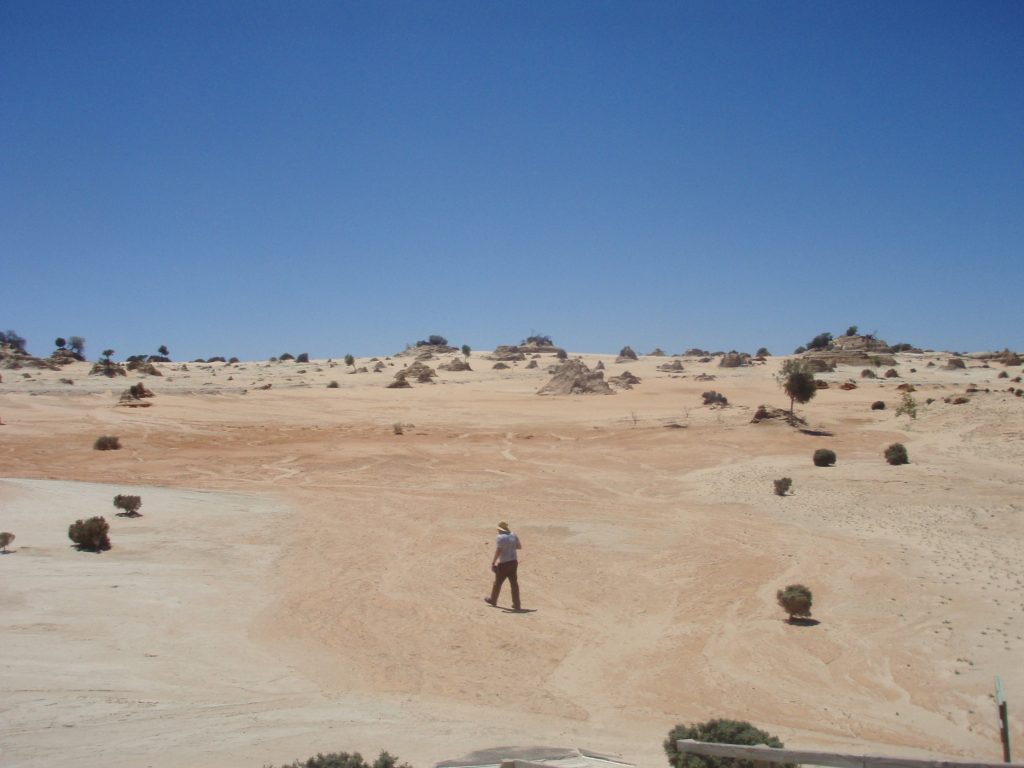
Lake Mungo lunette, Photo credit, Neville French
It was a risky challenge and I pushed the porcelain to its limits. My intention was to distil an essence of the extraordinary landscape, space and light. It is a place of great spiritual and cultural significance. The transparent, opaque and crystalline glaze surface is semi matt and built up with multiple thin layers of glaze to capture the parched and weathered surface of the dunes and the subtle shifts of colour, light and shade. I like the space between the juxtaposed forms and the luminous glow of the contained space that shifts with changes in the ambient light … it is evocative. The nuanced texture creates different affects of reflection and absorption of light and alludes to a depth of space. I feel the work evokes a poetic sense of the quiet, vast topography, the lunar quality of the dunes and captures the visual and sensory experience. It induces a feeling of reflection and reverence. It was the technical challenge and in the end captures something of the ephemeral effect of light and a sense of this special place.
What are some of the comments that have come about your work internationally?
Peter Schmitt MA, former director of the Landsmuseum in Karlsruhe, Germany says. ‘Neville French’s bowls form a unit of form and colour which does not compromise function but gives symbolic added value. Yet this is retained even if the observer does not know the title of the work or its reference to a specific location: “True beauty radiates from a light within”. (Eduard Morike)’’
Earth, sky, colour, light – Neville French- a master of glaze from New Ceramics, Oct,2009.
Nancy Margolis gallery director NYC says, ‘… colours and forms are so soft and luscious’.
Taken from a letter to Neville French
Artist Gwyn Hanssen Pigott says, “These are rare bowls: words like tender and generous, like temperate and powerful, spring to mind. They need to be absorbed slowly, and still they challenge summation. They are lovely empty; they would be lovely filled, say with lemons, in the afternoon light. I suspect they will surprise and nourish again and again. Like good friends. Like oases.”
Neville French: Thought and Action in Tune, Ceramics Art and Perception No27 1997
Do you see a deep and obvious Australian feel to contemporary Australian Ceramics?
Australian ceramics is diverse and vibrant and generally informed by international practice now with the advances in overseas travel and easy access to the internet. I don’t think there is an Australia aesthetic although the unique Australian landscape provides inspiration for many artists and influences the colours, shapes, scale and imagery to some extent. The land also provides raw materials and a tangible link to places. Interestingly there has been a return of interest in the use of local raw materials for clay bodies and glazes and a continuing interest in wood firing and Japanese ceramic aesthetics.
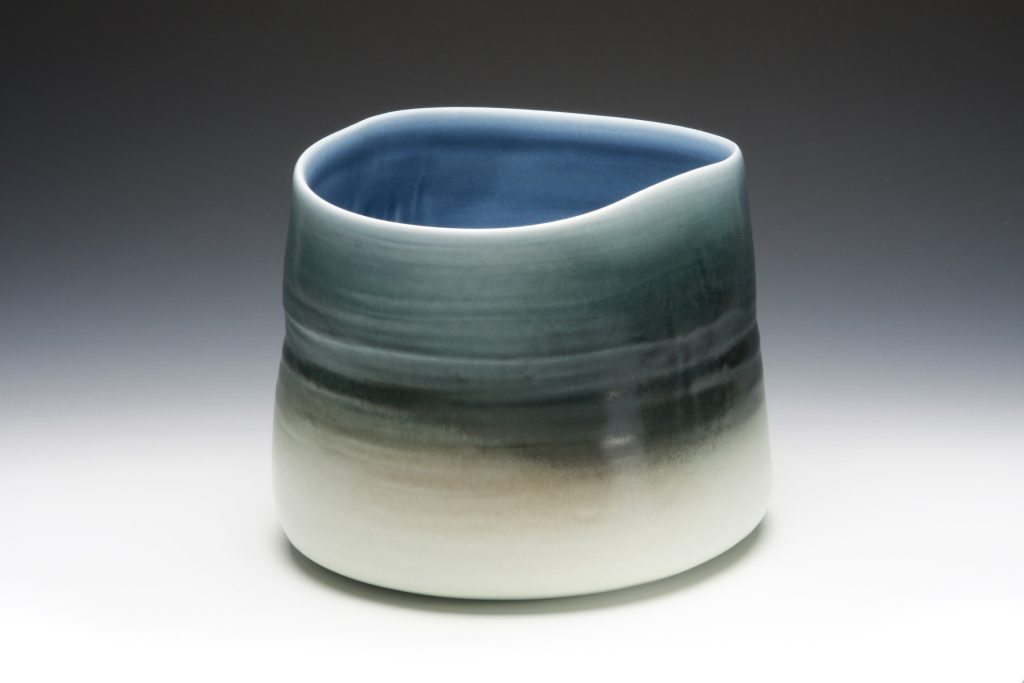
Winter Vessel, 2008, 29x28x23cm, photo credit: Terence Bogue
How do you see the change in both your work and Australian Ceramic generally?
My work is continually evolving, and I spend a great deal of time developing forms and colour glaze blends that can allude to the personal and meditative aspects of local places. I use the idiosyncratic nature of glaze to stimulate the imagination and evoke associations with environments. There have been some highly skilled and generous pioneer potters in Australia that have shared their hard-earned knowledge and made significant contributions to the standard of work being made here. I am very grateful to Ian Currie for his correspondence glaze course, Steve Harrison for his kiln building skills and research into local raw materials and Gwyn Hanssen Pigott who was my mentor and inspired and guided me in professional practice.
A decline in opportunities for students to study ceramics at diploma and degree level in recent years has led to the establishment of private schools that now assist students to gain the necessary skills. The growing interest in the community in handmade tableware and more meaningful and sustainable products has revived interest in handmade ceramics for use and given many potters viable career opportunities.
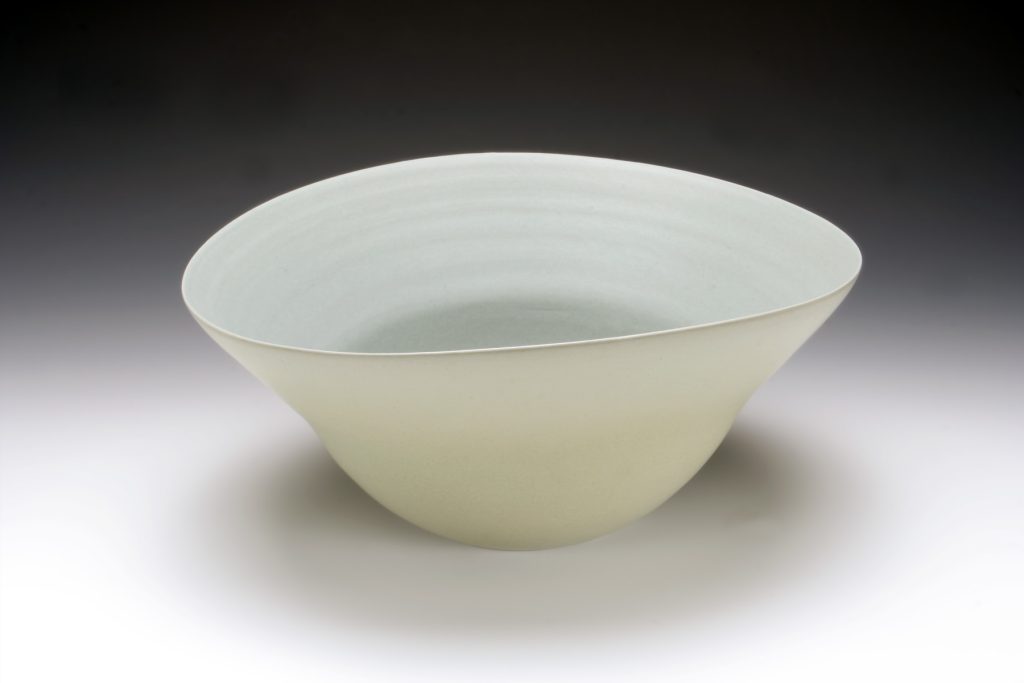
Enfield Bowl, 2007, 32x19x22cm, photo credit: Terence Bogue
Is there a definite feel for the land that can be seen in your work?
I grew up in Maryborough in central Victoria and my grandparents owned a farm at Eddington on the Loddon River across the Charlotte plains.
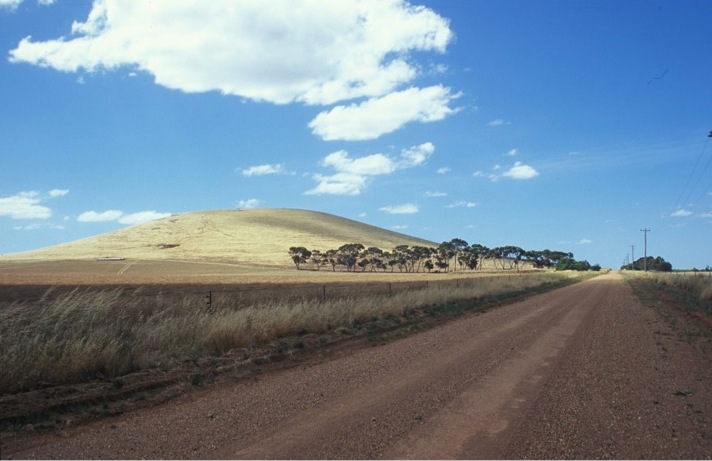
Charlotte Plains, Photo credit: Neville French
I spent a lot of time in this vast landscape and the big domed sky, vast horizon and silent spaces have left a lasting impression. Perhaps this is why I am drawn to vast meditative spaces in the environment.
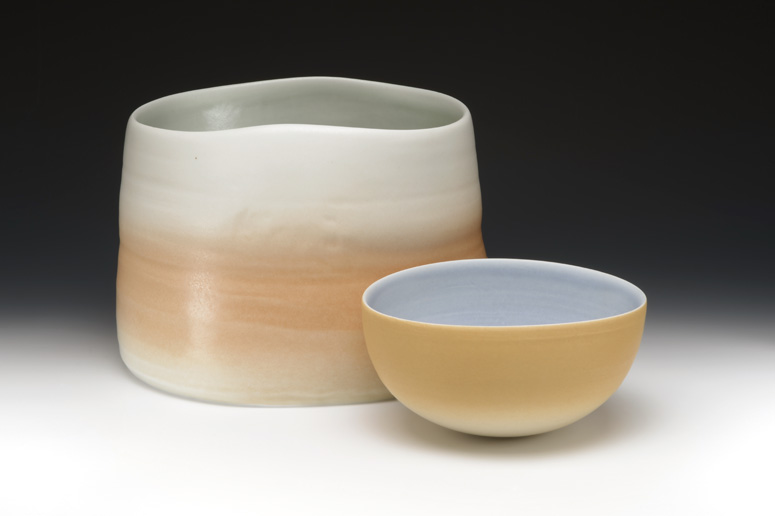
Mungo Light 13, 2014, Photo credits: Terence Bogue
Discuss your work in relationship to shape.
I particularly admire the fresco paintings of the Italian renaissance painter Piero della Francesca. His work impressed me profoundly when I first saw them 40 years ago. They confirmed a sense of beauty and mystery for me … the monumental solidity and simplicity, the softness, clarity of light and quiet, the colour palette. In the Arezzo frescoes I saw echoes of my local hill country, in the soldiers’ helmets from the legend of the cross. I inverted the shape to create a bowl. This wheel thrown shape was then cradled and scraped to smooth the surface and create taut contours. The silky matt glaze I developed fuses closely with the porcelain body and creates a luminous depth that evokes a sense of space and light.
Another influence on the shape of my work is the human figure. I taught life drawing to visual art students for 40 years and time spent analysing the subtle contours of the body, the soft texture and tones and teaching students about structure and relationship of parts has influenced the form of my vessels.
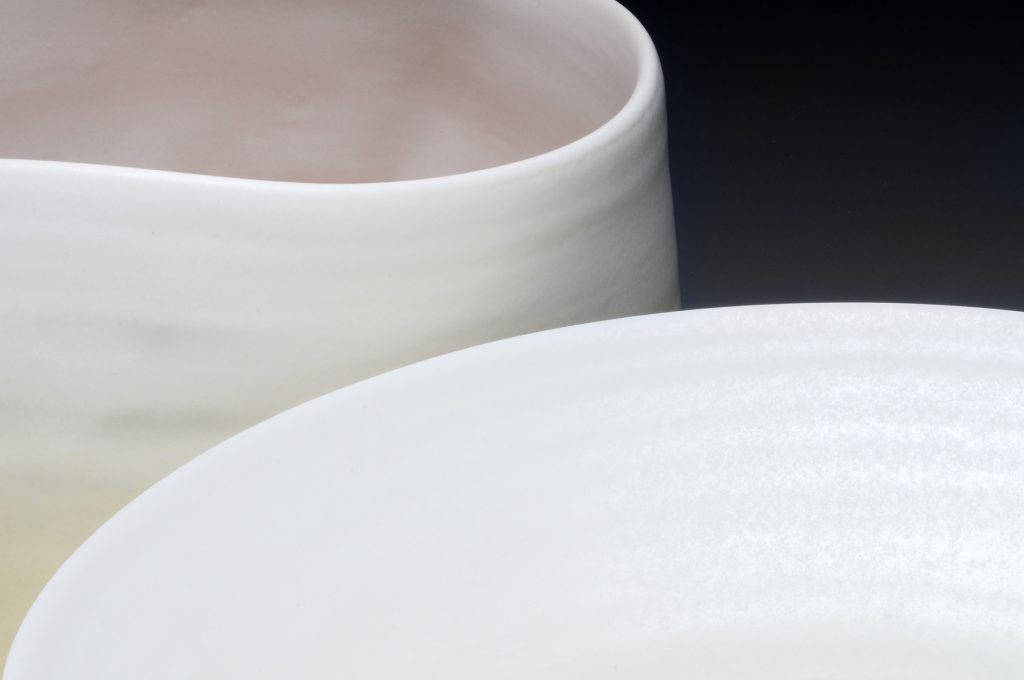
Mungo Light 5, 2012, Collection Art Gallery of South Australia
How do you manage to allow such a hard material to continue to have that feel of movement?
I try to exploit the natural characteristics of porcelain when I throw on the wheel and create soft undulating forms. I then alter the vessels to extend the movement and poise. When the wall of vessels has plasticity and dense weight you can achieve certain qualities and create movements of form and surface that can be further developed at the leatherhard stage of drying when it is possible to accentuate the spring of the taut contours. There is a high shrinkage with fine clays and they appear to lose something of their vitality as they dry. The glazes I have developed have a silky shine at high temperatures similar to the surface quality of the freshly thrown porcelain and this gives the high fired porcelain vitality.
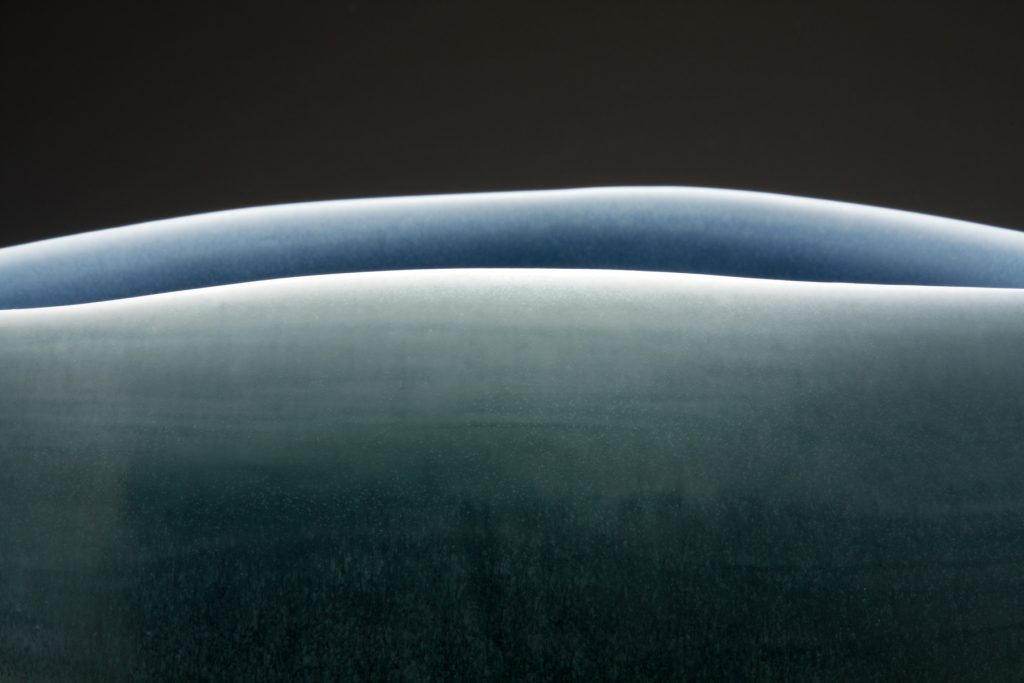
Winter Vessel, 2008, detail, Photo credit: Terence Bogue
Colour in your work is very subtle; expand on this aspect of your work?
Colour is an important element in my work for its emotive power and ability to trigger memory. I studied the German Bauhaus colour theory exercises of Johannes Itten (Art of Colour), Vassily Kandinsky (Point and Line to Plane & Concerning the Spiritual in Art) and Paul Klee’s lecture notes (The Thinking Eye & The Nature of Nature) as a way of developing my colour knowledge and understanding. My Masters degree research involved the development of a structured vocabulary of coloured glazes. I developed a palette of primary colours plus black and white in matt transparent glazes that could be layered and blended to create subtle nuances of colour and mood and give control over the emotive and expressive quality of the ceramic glaze surface.
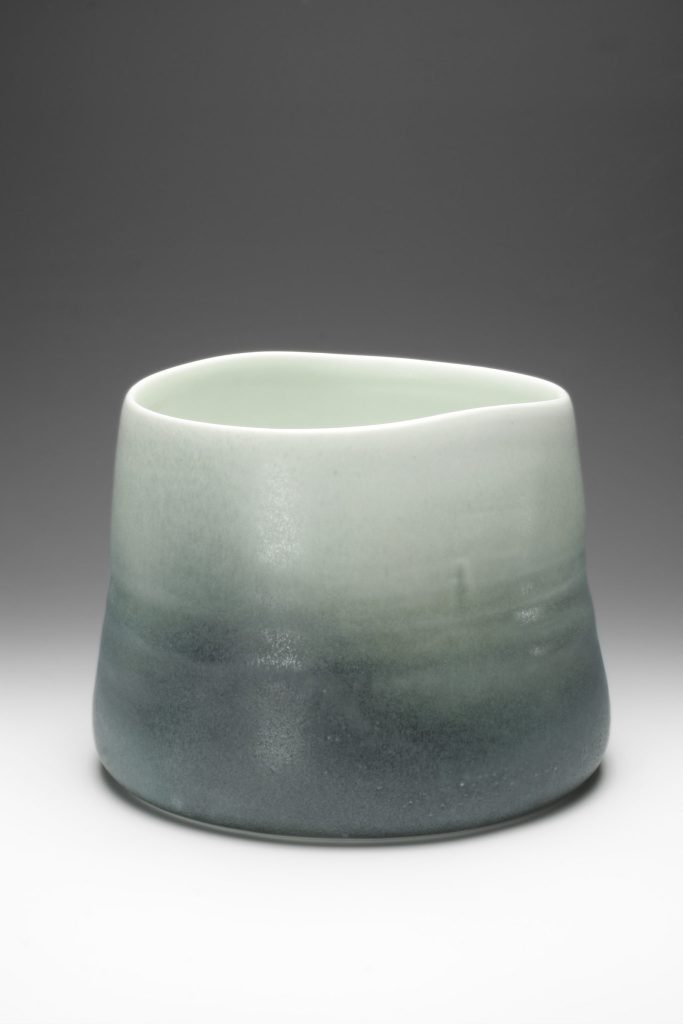
Winter Vessel, 2007, 27x22cm, Gold Coast Art Gallery collection, Photo credit: Terence Bogue
You are influenced by the landscape, has this developed due to your relationship of living in the country?
Yes, I have lived most of my life in country Victoria and observed the space, forms and shifts of colour and light on the land through different seasons, weather and time. For the past 40 years I have lived at Buninyong outside Ballarat and the grasslands and local rounded hills are an inspiration. I have also expanded my way of seeing and expressing the land by studying artists that I admire like Sean Scully and Richard Diebenkorn who create a wonderful sense of mood and place in their work.
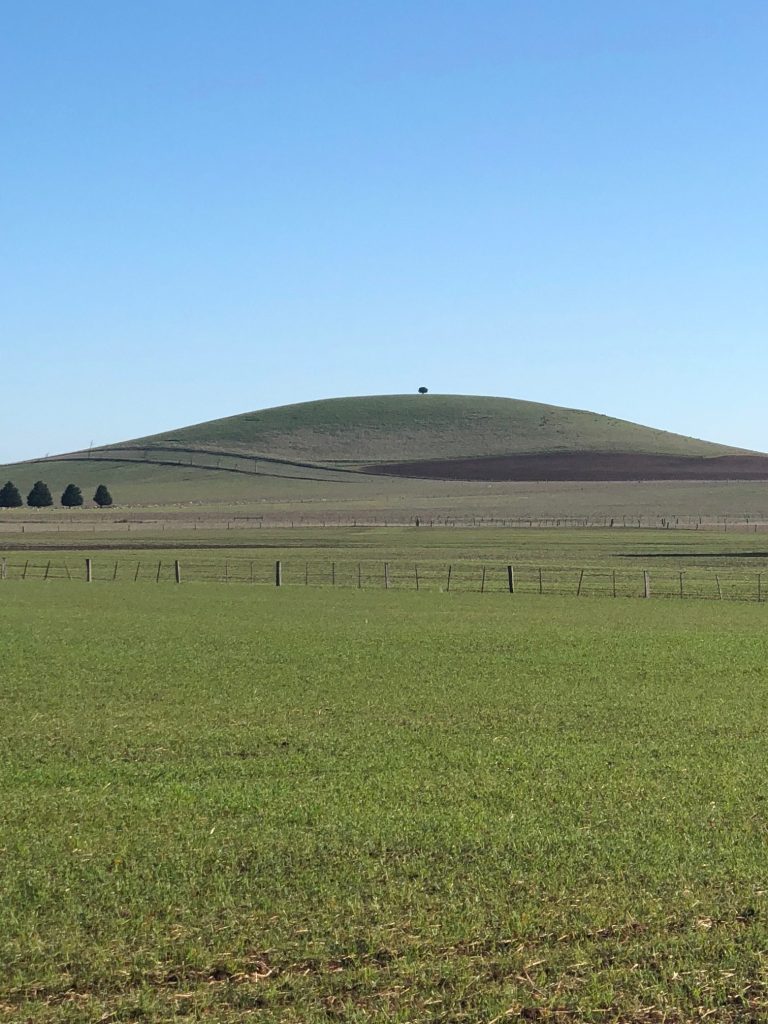
Ascot landscape near Ballarat, Photo credit: Neville French
Can you briefly tell us of ‘Your adventure’ in ceramics?
I went to art school to study painting but became fascinated by the alchemy of ceramics in my first year. I went on to major in ceramics although I continued to study painting and sculpture as well. I worked with artist John Gilbert for a year and developed skills in the creation of large coil built sculptural forms before travelling overseas to study art in the great museums. I returned to Australia with the understanding that I needed to study ceramic techniques in much greater depth to achieve the quality of work I had seen. I enrolled in a glaze correspondence course that Ian Currie he was trialling from the Brisbane College of Advanced Education in QLD and attended workshops and conferences to learn more about woodfiring. I was employed at the School of Mines Ballarat (TAFE) to establish a new ceramics diploma course and privileged to have the opportunity to be involved in the design of the new purpose built facilities. Prue Venables and I developed the new course and I enjoyed 30 years teaching and co- coordinating the program. I built a house and studio with a woodburning kiln at Buninyong and I have continued to develop my art practice from there for 30 years.
My work has been exhibited at the V&A in London, and the Grassi Museum in Germany as well as leading galleries in the USA, Germany, Korea and Hong Kong. Work is represented in many State and regional public collections in Australia including the National Gallery of Australia.
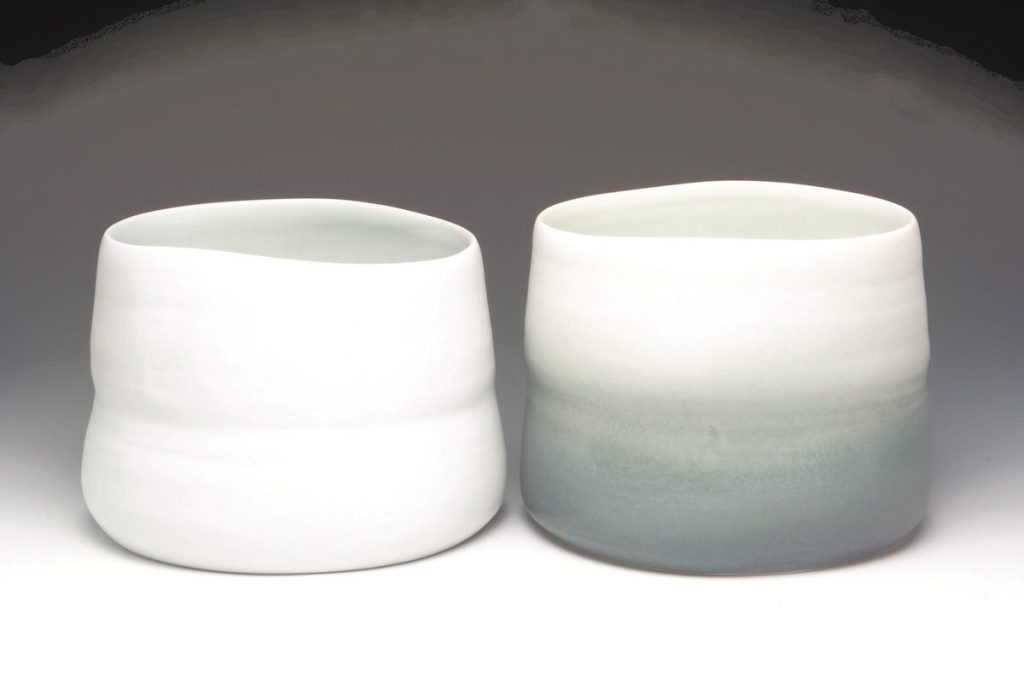
Large Winter Vessels, 2006
Discuss your thoughts on the collector. How should a new collector head into collecting ceramics?
This would of course be, to have at least one of your works.
A collector should invest in works that they like and artists whose work evolves over time … artists that have a strong commitment to a vision. It could be a single artist where the realization of the artists work can be observed and appreciated by the collector as it evolves. Perhaps another approach could be to collect a variety of artists work that relates to an aesthetic theme such as woodfired bowls. The collector could then develop expert knowledge and appreciation of variations and nuances. One valuable pleasure would be the opportunity to handle pieces and experience the weight, balance and material qualities.
I like pots that have a quiet and powerful presence and are beautiful, calm and evocative… poetic and mysterious vessels.
Pots can be intimate sculptures and through their use and visual presence can help provide respite from the chaos of daily life and expand and enhance life.
Contact details:
Neville French
nevillefrench.com
E: nevillefrench@bigpond.com
Interview by Deborah Blakeley, August 2018
Think a colleague or friend could benefit from this interview?
Knowledge is one of the biggest assets in any business. So why not forward this on to your friends and colleagues so they too can start taking advantage of the insightful information the artist has given?
Other artists you may be interested in:



